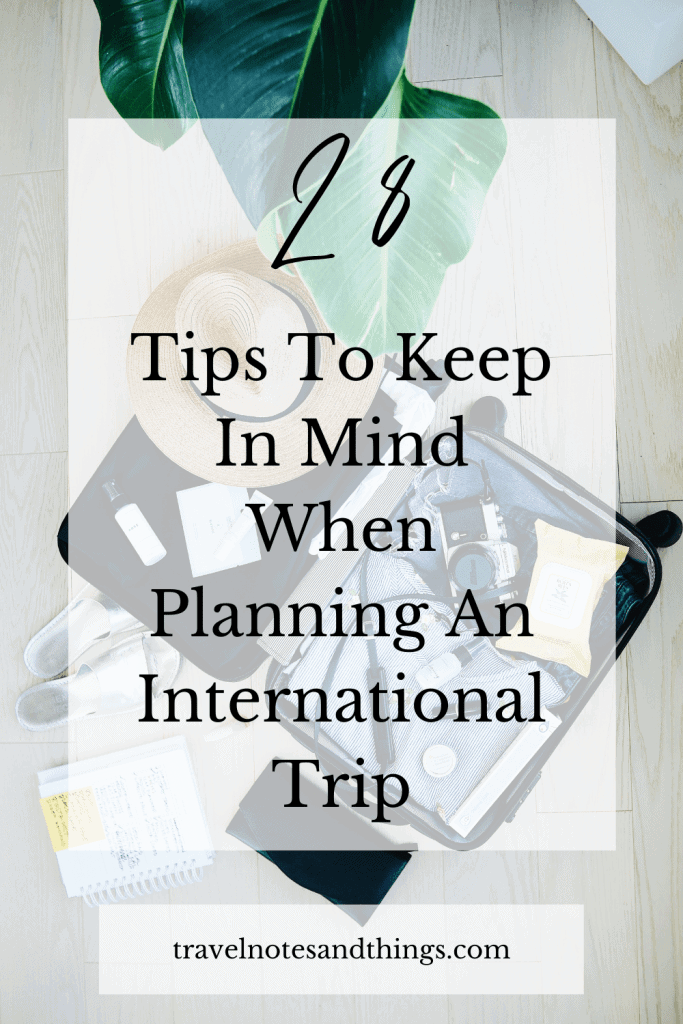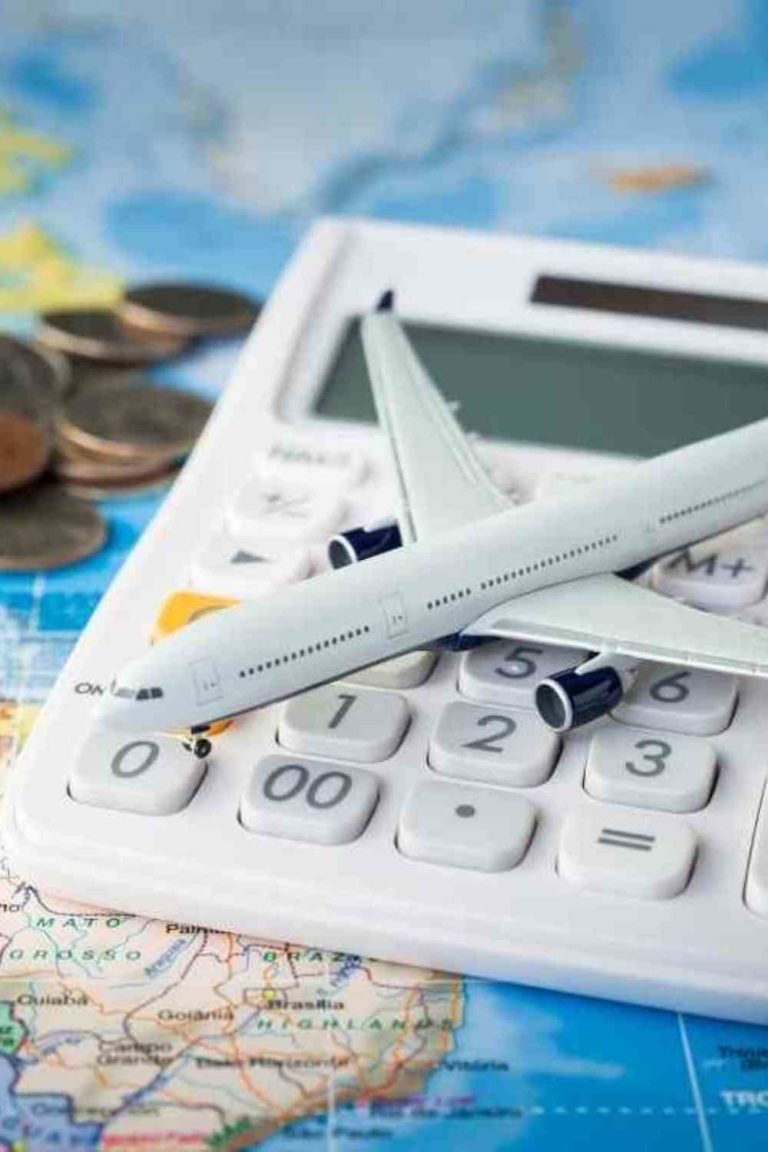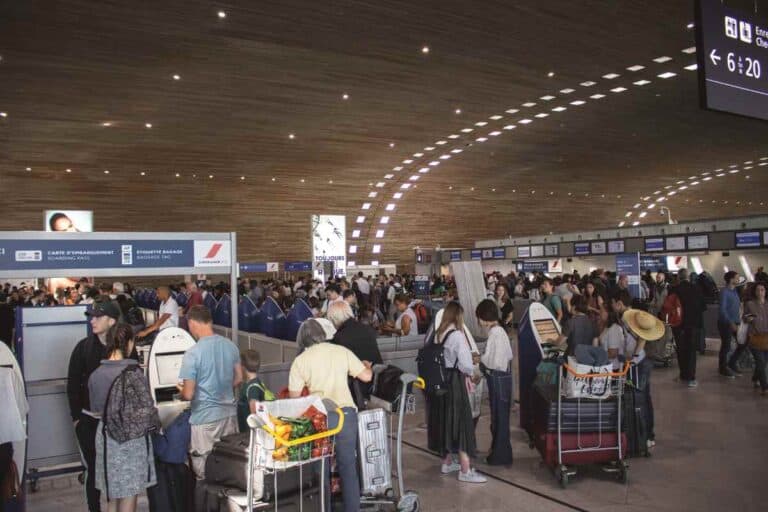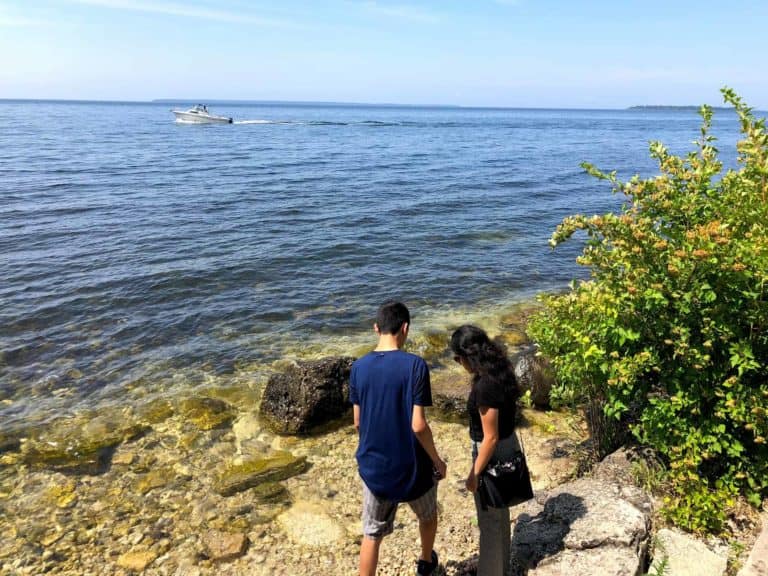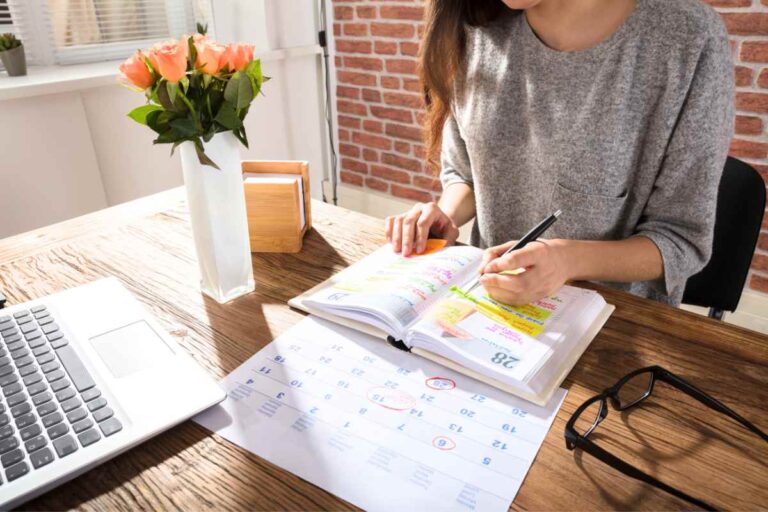28 Tips For Planning International Travel
Planning your first international trip or just looking to refine your approach?
We all know that planning international travel can be a bit daunting, whether it’s your first trip across the pond, or you’ve done it many times before. There are many things to remember, set up before you leave, and of course, pack!
It can be a lot. Trust me, I’ve been there, but so far in my travels, I’ve made it a point to keep these tips jotted down somewhere to refer back to them without having to think of every single detail.
With 10+ years of travel experience, these are the 28 travel tips I’ve accumulated, and now use to streamline my own travel planning process. From beginning to start.
This post covers everything from initial planning to navigating your destination, helping both new and seasoned travelers manage the small but important details easily.
Bookmark this page for a smoother travel planning process, and feel free to share your own tips or ask questions in the comments below!
Let’s jump in!

Pre-travel
Destination
- Research destinations
- Wherever your destination ends up being, look for things to do, places to see, especially seasonal things happening during your visit, etc. I personally love looking at places like Conde Nast for travel insight and inspiration. However in my humble opinion, nothing really beats someone’s experience whether it’s through a blog or a YouTube video, so those are 2 other sources of insight that I gravitate personally a lot towards.
- Check visa and/or vaccination requirements that your destination may require
- Simply type on google “(your country of origin) tourist visa requirements in (destination of choice).
- Check the passport expiration date, and make sure you have more than 6 months of validity on it.
- In the states, the expiration date cannot be 6 months or sooner from travel dates, for instance so check those small details with your passport
- Be aware of the type of electric plugs used in your destination
- Bring a converter, as the voltage may differ in your destination from your electronic devices, and you don’t want to break them.
- Book accommodations/flights
- Places such as Skyscanner, and Google Flights, are great options to look for flights online, as well as free apps such as Hopper and Jetto, which are apps that will find flight deals for you after inputting your destination, your dates of travel and airport that you want to fly out of. As soon as there is a deal, they will send you notifications when the prices have dropped. The Flight Deal email newsletter is also free is an email newsletter that will send you daily emails with a list of low airfares to a variety of destinations.
- Google maps is the most convenient way to get from the airport to the city center
- For example, look to see if there is a metro/underground subway system that connects from the airport directly into the city center as they do in Madrid, Spain, and in Sofia, Bulgaria, or maybe you’ll have to take a bus outside of the airport like in Dublin, Ireland or Athens, Greece.
- Pre-book any tickets to museums, walking tours, day trips
- Create a “rough” itinerary (allowing spontaneity)
- This obviously depends on person to person, if you’re keener on structured guidance and routine or more of go-with-the-flow improv. I tend to personally stand somewhere in the middle when it comes to itineraries, as I know that there are things and sights I want to experience, just as much as I want to grab a sorbet or drink and sit in a square admiring the architecture and people around me.
- A really good tool to use is Google Maps for mapping out a few coffee shops that pique your interest, food spots, and famous viewpoints or squares to stop by in the middle of your day.
Money
- Submit travel dates to the bank
- Let your bank know either by stepping in personally, calling them, or doing it online through your banking app or the online website. You do NOT want your bank to think there’s been some kind of fraudulent activity on your account when it’s just you using it abroad.
- Pro tip: Be aware when you’re buying tickets for a museum or activity whose company is located abroad, while you’re still in your home country. Your bank may also classify that as fraudulent activity, and block the transaction. Just keep an eye out and keep checking your bank account while you’re purchasing tickets at home, and while you’re using your cards abroad. Since you’ll still be in the U.S. or your home country if you’re pre-booking tickets, simply call the bank to confirm it was you and authorize the payment.
- Exchange any money if you’re choosing to have cash on you (not a bad idea!)
- Even if the world is moving towards the use of cards more than cash, many travelers still opt for cash to use while abroad. The reasons for this are that sometimes cash withdrawal fees are a bit cheaper than debit/credit card fees. There is also the peace of mind that you have the cash to pay for things, even in the most rural places or small towns instead of just relying on cards, as well as having a set amount of money to use and avoid overspending. Cash in my experience is never a bad thing to carry, even if it’s a little.
- If you’re going to exchange money, I personally do it before my trip through my bank directly, instead of at the airport or at my destination. If you do decide to exchange all your spending money, make sure that you’re not carrying all of it while you’re out and about. Store it amongst your belongings, in different spots
- Be aware of bank fees
- Each bank has its own international fees based on its association with certain “sister” banks abroad. Research or call your bank directly to ask for your bank’s “sister” banks located abroad, as those tend to have lower fees when withdrawing cash from their ATM machines.
Safety
- Make copies of your passport and credit cards in case your originals get misplaced or stolen.
- Let family and friends know of your general travel itinerary.
- Travel Insurance
Toiletries/packing
- Check the weather and pack accordingly
- Also, check if there are religious or customary norms/dress to abide by as a visitor in your destination, and consider that while packing.
- Don’t pack “just in case” clothes or outfits
- If a “just in case” opportunity does come up, there are stores you can always just pop in.
- Check liquid allowances, and how much you plan to take
- Opt for bar/solid solutions, such as bar shampoo and bar conditioner for example, that way you don’t have to worry about liquid allowances and/or spillage. Double-check your baggage allowance and decide if you want to take a checked-in bag or just a carry-on.
Electronics/MISCELLANEOUS items
- Research how to use your phone internationally.
- Bring a journal to document experiences/clarity you may gain on your trip or a funny story.
- Download your favorite shows/podcasts/books.
>> Read More: 11 Stores That Make Madrid a Top Shopping Destination
>> Read More: 11 Tips For Surviving Upcoming Holiday Traveling

On your travels
- Finding your way around
- Google maps, mapping out where you want to go before your trip,
- Buy an international SIM card
- Be aware of your surroundings
- Google maps offline, memorizing land markers
- Research transportation options
- Write down the emergency numbers of the city where you’ll be
>> Read More: 5 Of My Best Tips On How To Navigate Any Foreign City
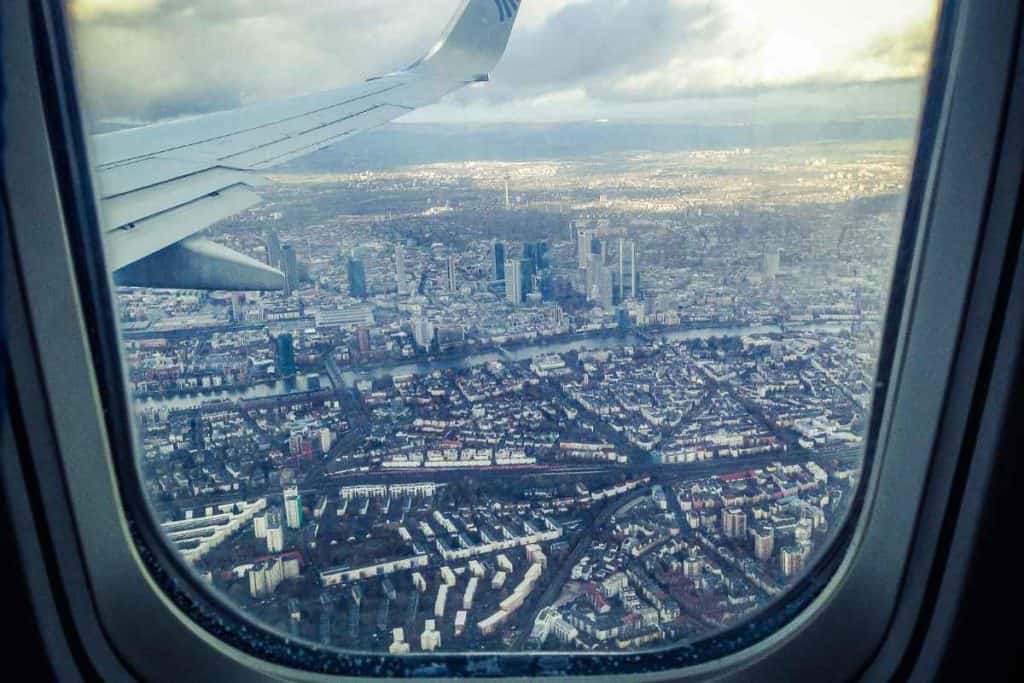
Post-travel
- Unpack your mind as you also unpack your suitcase
- Our travels always leave us with nuggets of knowledge, awareness, and clarity of some sort that needs the attention and focus to keep learning about at home. Your travels were just the start of something big you’re about to uncover…
- Reflect on your travel experiences
- Look at your photos, videos, any travel ticket or brochures, and let the memories and details come back to you.
- Allow the space to ease into your surroundings
- Reverse culture shock can hit along with jet lag, so make sure you don’t rush into things right away unless you feel like it. Your views on your own space and home city/country may change a bit, big or small, which is completely normal. Ask yourself what has changed.
- Embrace the changes you may have experienced
- Take all that you learned. From the sights, the people you may have met and exchanged a few words with, the food, and the cultures you experienced. What does it all mean to you? How will you continue learning about the world?
>> Read More:4 Ways Travel Brought Me Out Of My Comfort Zone
>> Read More: A Better Sense Of Self Through Travel
>> Read More: A Year After: My Experience Being Home For A Year After Living Abroad
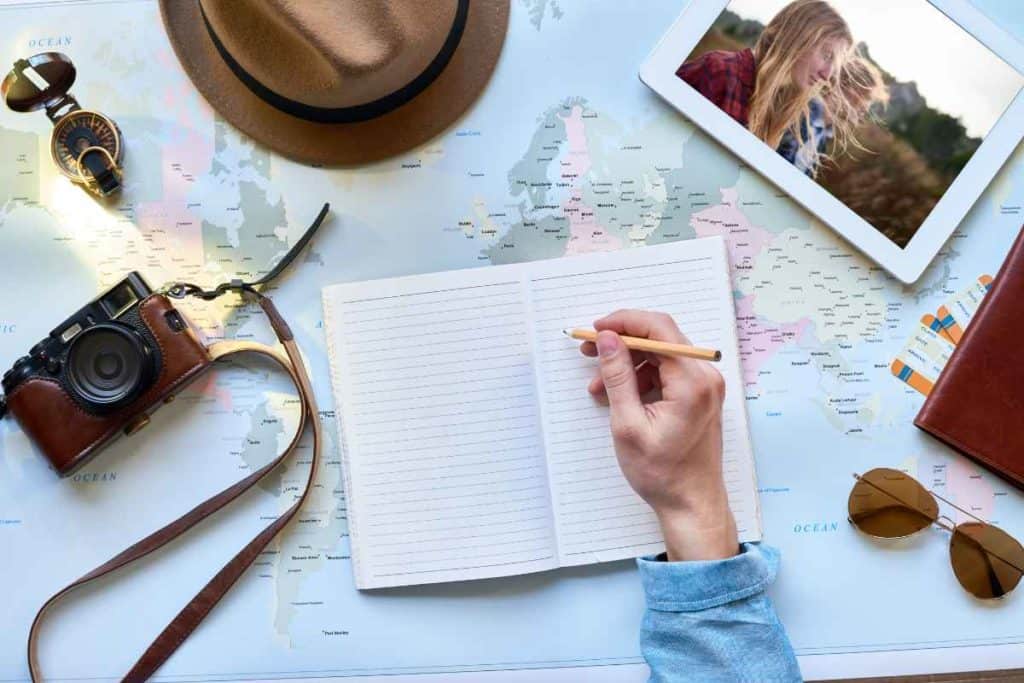
Let’s take it a step further
And because I know that having phone data to rely on when you’re trying to figure your way around a new city, finding that cafe shop you want to check out, or uploading and updating your IG story with your travels can be a lot to take in and figure out which SIM card works best for you. So, here I’ve compiled a list to make the selection process a bit easier for you! It’s called SIM CARD 101, and it’s a cheat sheet guide to help you know what you’re looking for when buying a SIM card! Just leave me your email down below, and it’ll be on its way to you!
I hope this list was helpful to you, and that it eases any kind of intimidation when it comes to travel planning and going abroad. Have any other questions regarding this list or other tips on how to plan your first international trip? Please leave them in the comments and I will gladly help as best as I can!
To more travel moments like this ✨

Pin for later
